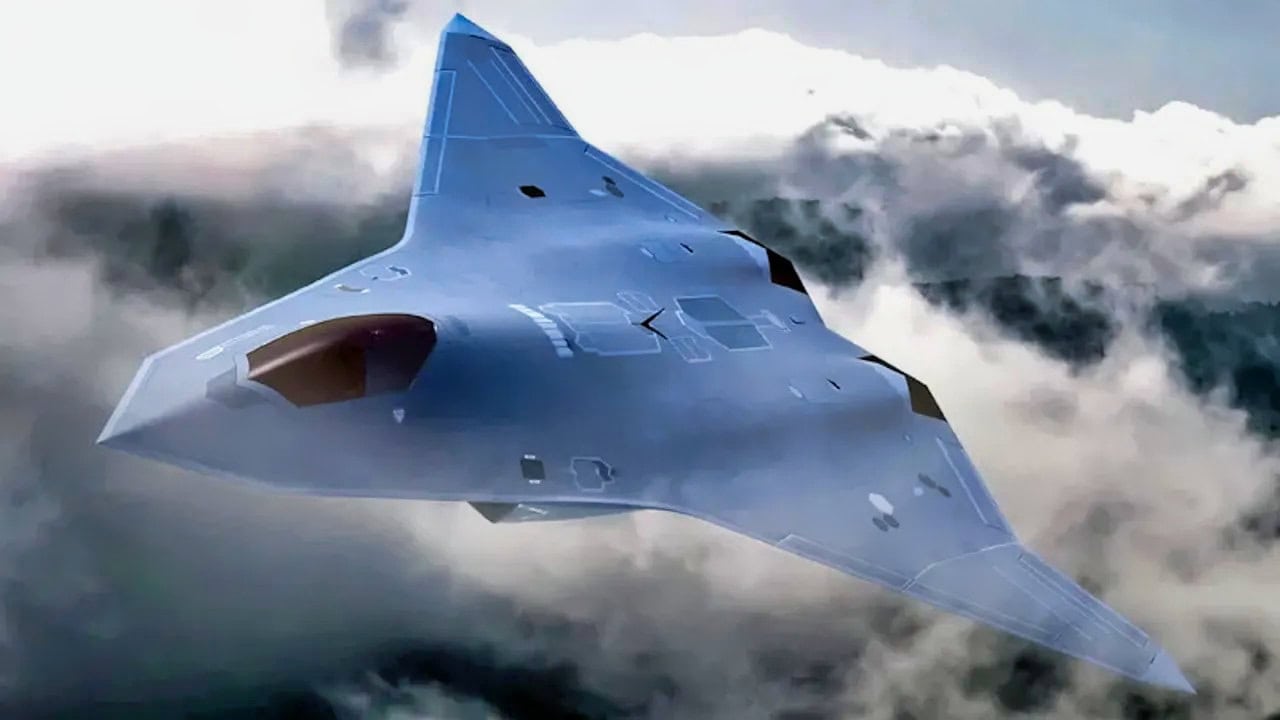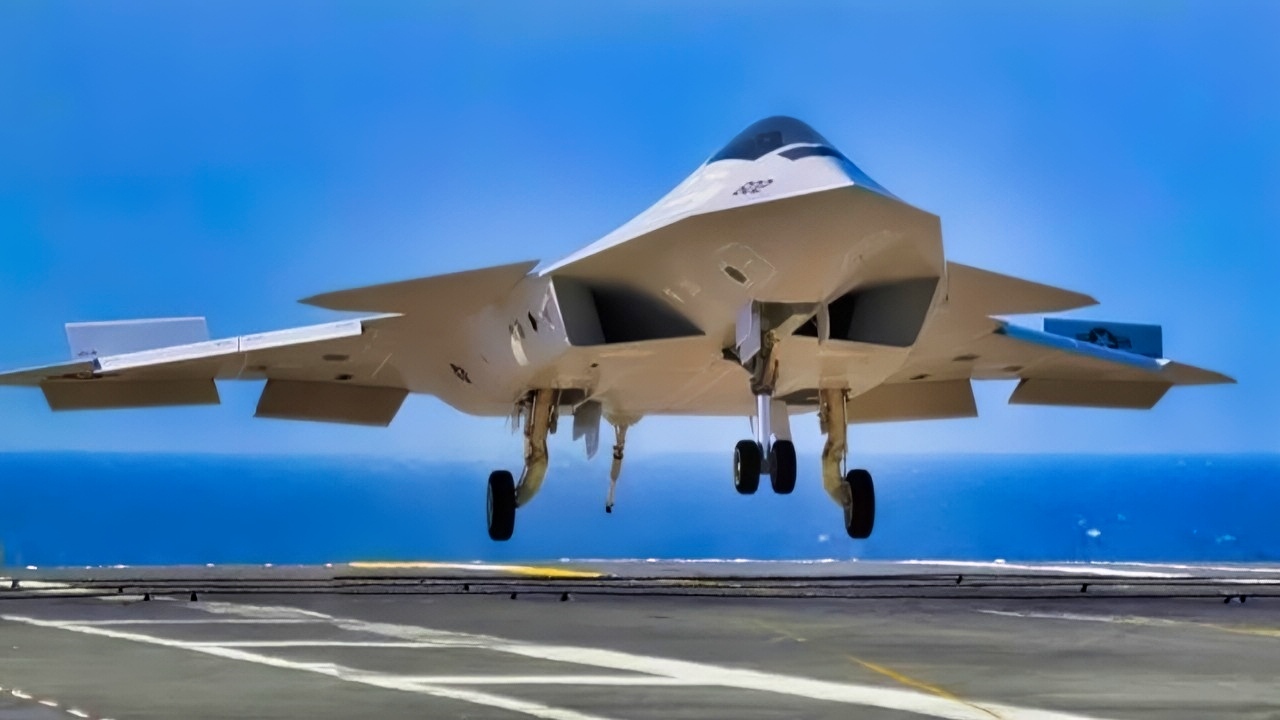Key Points and Summary – The Navy is poised to name a winner for F/A-XX, its sixth-generation carrier fighter, after Defense Secretary Pete Hegseth approved the down-select earlier this month.
-Despite earlier budget wobbles, Congress restored and expanded funding, clearing Boeing and Northrop Grumman to the final round.

F/A-XX Fighter Mockup. Image Credit: Creative Commons.

F/A-XX U.S. Navy Fighter. Image Credit: Creative Commons.
-The jet must combine broad-spectrum stealth, roughly 25% more range, powerful EW, open-architecture upgrades, and teaming with autonomous “loyal wingmen,” while surviving the stresses of carrier ops. Boeing’s NGAD win aids its case but raises capacity questions; Northrop offers unmatched stealth lineage.
-A timely decision moves the program into full design, prototyping, and ultimately production—if funding stability holds.
F/A-XX: Looks Good, If The Money Holds…
Per a report from Reuters, Defense Secretary Pete Hegseth has approved a final decision on the contractor that will build the Navy’s next-generation carrier-based fighter jet. The report claims that Hegseth approved the decision earlier this month, on October 4, and that the decision could be made public as soon as this week.
Why F/A-XX Matters
The winning design, when revealed, will be the Navy’s newest and most advanced strike fighter jet, designed for carrier operations, stealth, long range, advanced networking, and optionally unmanned teaming.
The design is intended to survive highly contested environments and provide the Navy with the kind of sixth-generation technology already under development for the U.S. Air Force’s Next Generation Air Dominance (NGAD) program.
But Will It Really Happen?
The announcement, however, has already been delayed by a spate of unexpected internal problems and budgetary hurdles.
Earlier this year, the program’s funding was reduced when the Pentagon proposed maintaining only minimal “bridge” funding while prioritizing the F/A-XX over the Air Force’s NGAD/F-47 program.
The announcement prompted widespread condemnation among analysts, observers, and military officials, who expressed concern that the F/A-XX program might be shelved altogether.
However, in the spring, internal advocates worked to push their budget demands and apply pressure on Congress directly.

F/A-XX Fighter. Image Credit: Creative Commons.
Months later, Congress ultimately intervened and restored and enhanced the original funding, putting aside $1.4 billion for fiscal year 2026 in the Defense Appropriations Bill.
That reversal from Congress made it clear that the legislators would fight to keep the competition alive, and though the budget debate may not be entirely over, the path forward is now open again.
The Navy is preparing to select its winner. At least, for the moment.
Once the decision is announced, the winning contractor will proceed to the full design maturation stage, followed by prototyping and, later, production.
What to Expect from the Winning Design
Whatever the winning design may be, several key functions and capabilities are necessary for the U.S. Navy to defend against credible threats in the Indo-Pacific and beyond.
However, knowing what to expect from a winning design isn’t just about understanding what the Navy needs, but the constraints of operating aircraft from an aircraft carrier.
Chief among the most crucial design elements are stealth and survivability.
The F/A-XX must be low observable across radar, infrared, and electromagnetic signatures, to ensure that it is not easily identified and tracked by adversaries.
It must also be resilient against increasingly capable integrated air defense systems deployed by peers.
Survivability also means that it will be fitted with electronic warfare capabilities and designed to be agile.
Extended range and fuel efficiency are key, too. Navy leaders have called for at least a 25% increase in operational range over current fighters, and that’s not out of the realm of possibility.
Open architecture and modular upgradability should also be expected. It’s a design feature seen on every planned sixth-generation aircraft and even some upgraded variants of existing fifth-generation designs.
Aircraft that are more easily upgraded tend to enjoy longer service lives.
As technology becomes more deeply integrated into modern fighter platforms, upgradability will ensure that future midlife upgrades and enhancements are easier and less expensive to implement.
Manned and unmanned teaming is inevitable as well.
One of the signatures of future air warfare is the ability for a manned fighter to lead, control, or delegate to a swarm of “loyal wingmen” or collaborative combat aircraft (CCA). The F/A-XX is expected to cooperate in a networked family-of-systems environment, much like the Air Force’s F-47.
Sensor fusion will ensure that the aircraft provides pilots and operators with the best possible picture of the threat environment.
F/A-XX will not only carry a suite of modern sensors, but will be equipped with the computational power to fuse data across domains, including air, maritime, space, and cyber, in real time. That data will then be shared with other platforms via secure, high-bandwidth datalinks.
What We Know So Far
As of now, the competition has been largely narrowed down to two contenders: Boeing and Northrop Grumman.
In March 2025, sources reported that Lockheed Martin had been eliminated from the competition.
Boeing, fresh off its selection as the Air Force’s F-47 NGAD contractor, has a strong chance of being selected for the Navy project, too – although, given the concerns about industrial capacity having already hindered the progress of the F/A-XX program, the company will need to prove it has the capacity to handle both the Navy and Air Force’s sixth-generation programs simultaneously.
Northrop, meanwhile, brings decades of experience in stealth and systems integration to the table, notably through its work on the B-2 and B-21. The company also offers more experience in developing aggressively low-observable designs.
Publicly released artist renderings have already hinted at some distinct design features. Boeing looks to be leaning toward an evolutionary design based on traditional carrier-based aircraft designs, while Northrop’s concept was notably sleeker and tailless, reflecting a more stealth-focused design.
It’s impossible to say at this stage which design will win, but many have speculated that whatever design ultimately prevails, it will be a combination of the two philosophies; a hybrid that retains classic carrier-based fighter designs and incredible stealth capabilities.
However, all of this depends, of course, on the funding remaining solid and stable.
About the Author:
Jack Buckby is a British author, counter-extremism researcher, and journalist based in New York who writes frequently for National Security Journal. Reporting on the U.K., Europe, and the U.S., he works to analyze and understand left-wing and right-wing radicalization, and reports on Western governments’ approaches to the pressing issues of today. His books and research papers explore these themes and propose pragmatic solutions to our increasingly polarized society. His latest book is The Truth Teller: RFK Jr. and the Case for a Post-Partisan Presidency.
More Military
Canada Is ‘Full Steam Ahead’ on F-35 Stealth Fighter
Why Does Turkey Have So Many Main Battle Tanks?
‘Cracked Barrels’: The U.S. Navy’s Big Railgun Failure Explained in Just 2 Sad Words
‘Had No Chance’: The Montana-Class Was the 71,000-Ton Battleship Destined to Fail
‘Captain, We Smacked It Another Submarine’: British and French Nuclear Missile Subs Collided










